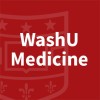Suubi4Cancer: Improving Access to Pediatric Cancer Services and Treatment Adherence Among Children Living With HIV/AIDS
HIV/AIDS, Cancer

About this trial
This is an interventional supportive care trial for HIV/AIDS focused on measuring Suubi, Youth, Poverty, Economic Empowerment Interventions, Epidemiology, Access to Treatment Services, Treatment Adherence, Uganda
Eligibility Criteria
Inclusion Criteria:
Youth inclusion criteria are:
- HIV+ (confirmation by medical report)
- Must be living within a family (defined broadly, not necessarily with biological parents);
- Must be between 10-24 years old
- Attending one of the 39 clinics
Did not access services or expressed unwillingness and/or inability to do so.
- For Aim 1, inclusion criteria only includes 1) and 3).
Caregiver inclusion criteria:
- Have a YLWHIV (with suspected cancer) under their care who attends one of the 39 study-affiliated clinics.
Exclusion Criteria:
Potential participants will be excluded from the study if the research team determines that the participant:
- Cannot comprehend the study and participant rights
- Is unwilling to participate.
Sites / Locations
- International Center for Child Health and Development
Arms of the Study
Arm 1
Experimental
Combination intervention
Selected families will be assigned to the treatment condition (delivered over 9 months) to receive BSC plus a family EE intervention comprising of a matched family development account (FDA) for health-related expenses, including transport to UCI, food/nutrition, and health insurance. Combined with the Family EE will be four sessions of Financial Literacy and Management (FL&M) and two sessions of cancer education. The sessions will be conducted over a 4-week period. The two cancer-specific education sessions will use UCI materials to address: 1) definitions of cancer, potential causes, signs and symptoms, and importance of cancer testing; 2) debunking cultural explanations for the causes of cancer and misconceptions (beliefs, values, norms and prevailing attitudes)regarding cancer that largely impede service use. *Due to insufficient sample size, the open clinical trial is not being conducted.
Outcomes
Primary Outcome Measures
Secondary Outcome Measures
Full Information
1. Study Identification
2. Study Status
3. Sponsor/Collaborators
4. Oversight
5. Study Description
6. Conditions and Keywords
7. Study Design
8. Arms, Groups, and Interventions
10. Eligibility
12. IPD Sharing Statement
Learn more about this trial
